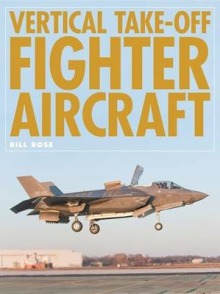Home > All Titles > Adult Non-Fiction > Aviation & Military > Aviation Books > Vertical Take-off Fighter Aircraft

As long ago as World War 2, designs were underway for vertical take off aircraft, and the Germans were the first to conceptualise the idea during the last phase of the war, when engineers conceived the Focke Wulf Treibflugel as a defence against the ever-increasing Allied bombing raids on central Germany. It was a Vertical Take-Off and Landing ‘tailsitter’ interceptor intended for the defence of critical war factories and key areas without suitable nearby airfields for combat aircraft. The Treibflugel’s exotic propulsion system reached an advanced stage of testing, but no complete prototype was ever built.
After the war, the research undertaken in Germany inspired various VTOL projects across the world. In America, the aircraft companies Lockheed and Convair were contracted by the US Navy to built prototype carrier based VTOL fighters. The French company SNECMA experimented with annular wing designs based on German research, the British began work on horizontal rising, experimental aircraft and the Soviets followed with a series of designs produced by Yakovlev. In the West, NATO attempted to develop a supersonic vertical take-off and landing strike-fighter for general use, although this never materialised due to political disagreements. The Germans then decided to go-it alone, building an advanced supersonic VTOL interceptor and a low-level VTOL strike fighter. Both flew successfully, but failed to reach Luftwaffe service for various technical and operational reasons.
Latterly the Hawker Siddeley Harrier would become the best known and only successful VTOL fighter aircraft.
The final version of the BAE Harrier was retired from UK service in October 2010 and it is now scheduled for full-replacement in UK and US service by the advanced Lockheed-Martin F-35B STOVL stealth fighter. In service with the Royal Navy, the F-35B will operate from the new aircraft carriers – HMS Queen Elizabeth and HMS Prince of Wales – which are are currently under construction.
In Vertical Take-Off Fighter Aircraft author Bill Rose provides a comprehensive history of all types of vertical take-off aircraft from the earliest experiments before World War 2 to the present day. He includes many little known designs, which never progressed beyond the concept stage, completed prototypes and the better known experimental and operational aircraft.
He also includes a number of aircraft that were influential or related to VTOL aircraft, such as early VTO rocket fighters, rocket launched conventional fighters and specialised prototypes with exceptional short take-off and landing (STOL) capabilities.